By Mark Miller
Selecting a handgun should be easy. We are truly in a golden age of handgun development with many well-made reliable choices. That is the problem for some shooters, the vast array of choices can seem daunting. Once you apply some common sense, you can get a model that fits your hands and your needs.
There is an old story about a Texas Ranger. He was attending a social event with his family, wearing his issue sidearm. A woman approached the Ranger and said “I see you are wearing a pistol, are you expecting trouble?” The Ranger replied politely, “Why no ma’am, if I was expecting trouble, I would have brought a rifle.”
Pistols aren’t what you bring to a fight, they are what you have when you don’t expect a fight. They are designed to keep you alive long enough to get to a rifle. They make it easier to “have a gun.”
Given that the pistol is not a primary weapon, how much pistol is enough? One school of thought is that a .22 (.25 or .380 or .32) will be fine because you will be at close range and you can “shove it under his chin and empty the magazine.” The small pistol you carry is infinitely better than the large frame .44 at home. More than once, I have heard the argument that the .22 is used by assassins and poachers (I am not sure where this common knowledge comes from) and has killed many people.
My response: For uncounted millennia far back into pre-history, the sharp stick was the dominant weapon on the battlefield. Arguably it is highly effective and has killed countless millions of humans and game animals. Some claim it drove the great Wooly Mammoth to extinction. In spite of this, I choose to carry a more efficient tool which harnesses chemical energy. A lot of chemical energy.
Another point of view emphasizes shot placement and accuracy. These guys say that handgun rounds won’t reliably stop a threat unless you shoot repeatedly with a large-caliber and get good hits. They advocate full-size guns with calibers beginning in four. There is an old saying among hunting guides; “Don’t hunt something unless you have enough gun to kill it.”
The most important quality a handgun must have is portability. If you will not carry it with you (for most of us, that means concealed) you may as well bring a rifle. This makes small handguns valuable.
I have heard a thousand variations of this- “The Secret Service carries the Sig 229 in .357 Sig. They protect the President, so that must be the best gun out there. I want to carry a 229 in .357 Sig”
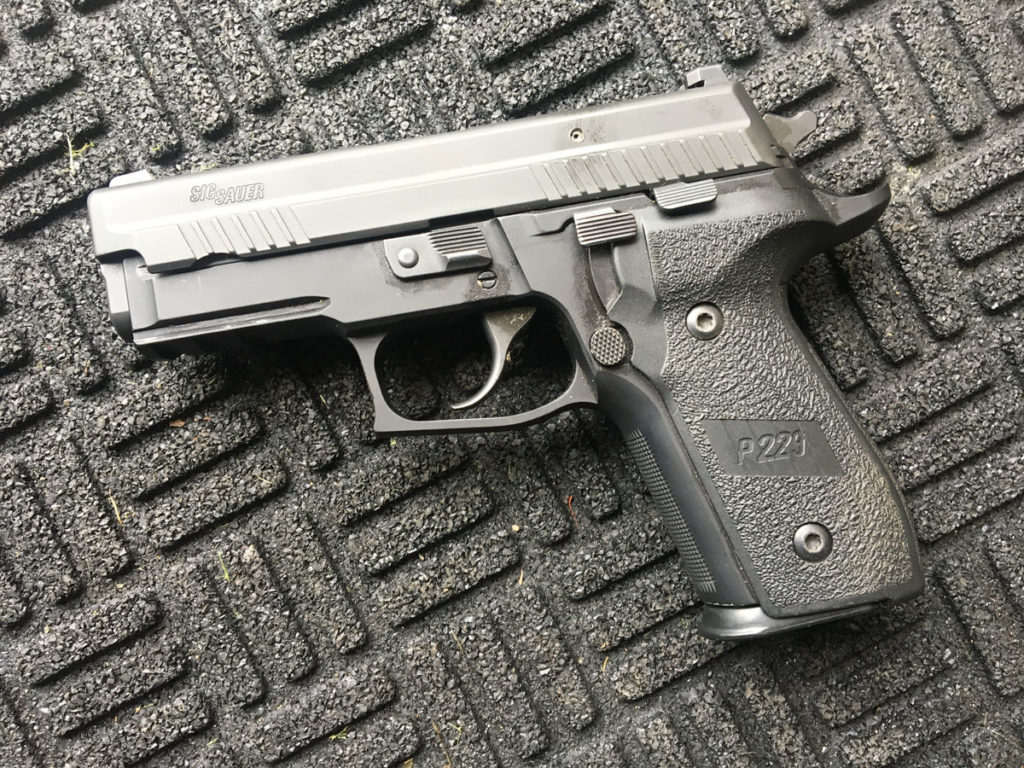
The SIG 229 is a quality mid-size handgun. The decocker and double action trigger require good reach.
Some people want a gun because the SEALs use it or they heard that Special Forces have it or the police carry it. These may be good indicators of a quality but your requirements are not the same as theirs and you may find that what works for them is merely an over-priced range toy for you.
To me, this sounds just like “Michael Jordan was the best basketball player in history. He wore size 14 Air Jordans. I want to wear size 14 Air Jordans.” If the gun doesn’t fit, you need better kit.
The gun must fit the shooter. If your hands are large or small, fingers are long or short, the gun must fit your hands. Imagine an Olympic runner with the finest, most technologically advanced shoes on Earth. Now imagine one of the shoes is several sizes to small and the other too big. The runner’s potential speed would go unrealized because of poor equipment fit.
A gun that fits the shooter will be faster into action, inspire better mindset in the shooter and be more efficiently operated. All of these are key advantages in a fight. The practical accuracy of a handgun depends much more on the fit to the individual user than on the gun’s potential mechanical accuracy.
Trigger manipulation is the most profound fundamental in shooting. A heavy and long double action trigger pull can make it difficult to shoot accurately under stress even though they have great potential accuracy. For people with small hands, long trigger pulls require constant adjustment of the grip to gain leverage. People with big hands have trouble with sub-compact guns. This doesn’t encourage rapid shooting.
Many ranges offer rental guns. The best technique for checking handgun fit is to get a gun on the range, manipulate all the controls (right and left handed) and then shoot it. If you can reach the controls without major changes in grip and manage the recoil, you have a viable candidate for your new pistol.
In the days of “Saturday Night Specials” cheap handguns fired small rounds and had little chance of hitting a man-sized target at 25 yards and a smaller chance of functioning long enough to empty a magazine. Modern custom pistols can shoot one ragged hole at 25 yards from a machine rest, and production handguns normally shoot head sized groups. Your results may vary.
The Police Marksman Association conducted a study which examined 180 cases where the Law enforcement Officers WON the confrontation. The results:
– Average distance was 20 feet
– Average number of rounds fired: 3.5. This was dependent on caliber; with a .357 Magnum the average was 2.3 rounds and 9 mm it was 5.5 rounds, and other calibers fell in between these two figures
– Police Officers hit 61.5% of time
Civilians have similar distances in their confrontations. If someone is going to steal your wallet or try to rape you, they have to get close. They will try to approach without alarming their prey and will not become threatening until they are within conversational distances.
At typical shootout distances, most guns on the market have the mechanical accuracy to hit the vital areas of a threat. The bad news is that potential mechanical accuracy may not translate into hits on a threat under stress.
I want a quality gun which has high potential accuracy and high reliability. With modern manufacturing techniques, accuracy and reliability are not polar opposites; both are possible in the same gun. If forced to choose, I prefer reliability over accuracy.
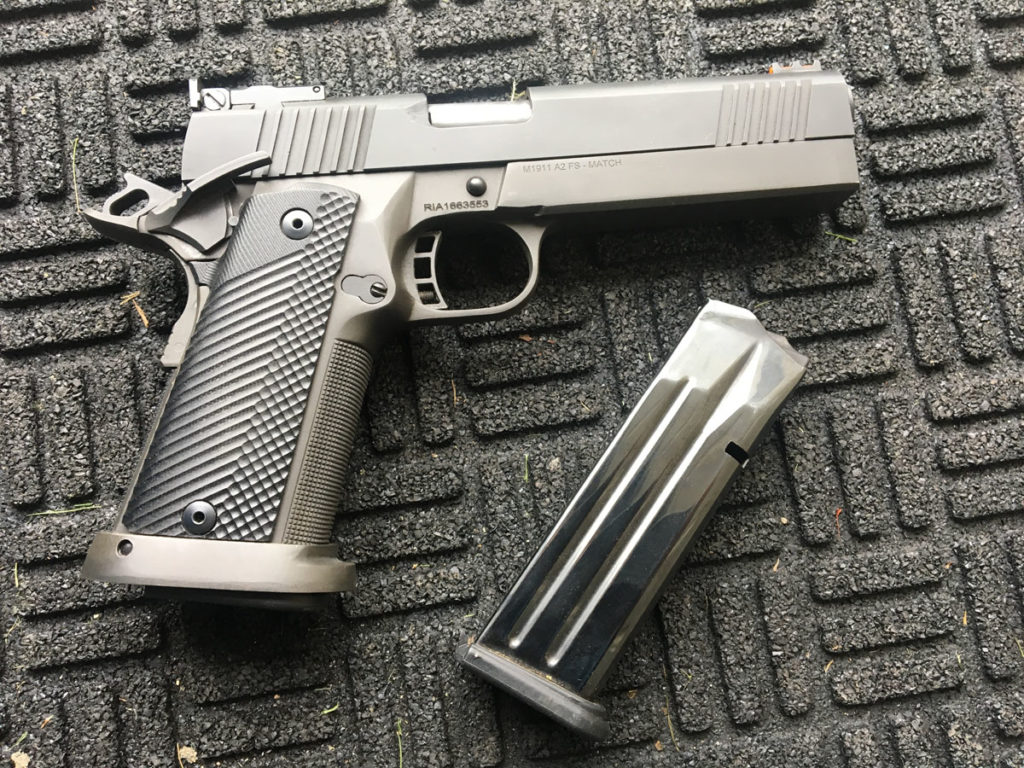
This Rock Island double stack 1911 in .40 cal is powerful and accurate. Not every shooter can handle this much steel.
A handgun which shoots a smaller group than another handgun with the same ammunition is likely to have been made with more precision. An accurate handgun is not necessarily less reliable. Closer tolerances come from quality manufacturing. This quality translates into consistent lock-up and accuracy. Making a precision weapon that works reliably is harder and generally more expensive.
Short barreled handguns can be as accurate as or better than long barrels when fired from a rest, but there are two other critical issues. The longer the barrel, the faster the bullet goes, imparting more energy. Long barreled guns provide a longer sight radius and often balance better. If the gun becomes so big that you will not carry it, those advantages are moot.
To be useful, a handgun must be capable of stopping a hostile human from doing us or others physical harm. We need bullets of sufficient energy to penetrate to the brain or spine for instant incapacitation, or into the heart or major blood vessel to produce a quick stop.
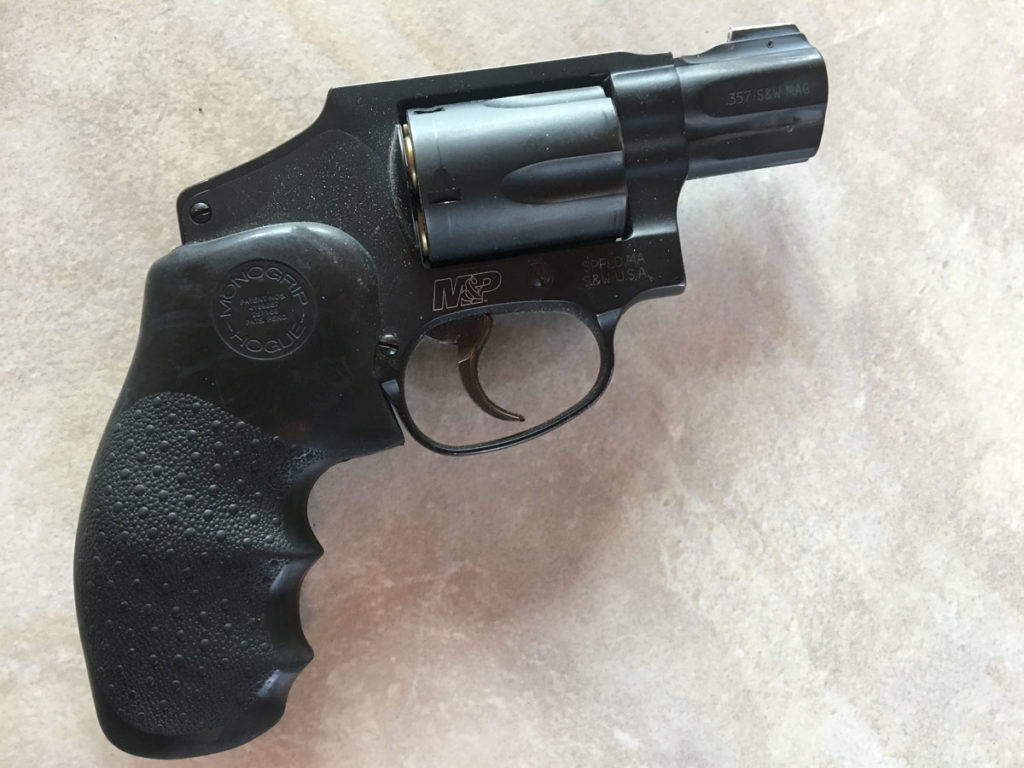
The Smith and Wesson M&P 340 is small and light. Before you carry it with .357 rounds, you should shoot them at the range.
Based on my examination of ballistic data, I believe that modern hollow point ammo in calibers 9mm and above offer sufficient energy to use on human threats. Anything less may have poor outcomes. Carefully select defensive ammo. Shoot enough of your selected ammo to make sure it is accurate and reliable in YOUR handgun.
Target shooting doesn’t predict performance in defensive shootings. Reality-based training using Simunitions or airsoft is more relevant. If money is short, buy a factory gun and high-quality training. Stress can translate into poor trigger control and poor aim.
Human threats don’t have scoring rings indicating vital areas. Your ignorance of human anatomy may negate the potential accuracy of your gun. If someone is attacking you, you will probably move. Threats tend to move too, especially if you pull a handgun out and start shooting. Sight alignment and point shooting become significantly harder when we add movement or other tasks like blocking or receiving punches. Even with great marksmanship abilities, people miss close, large targets in real fights, sometimes missing completely.
To sum it up:
Most American factory guns are accurate and reliable enough out of the box for defensive shooting.
Get the best gun you can afford to train with. Quality is expensive.
Carefully select a gun with an adequate caliber which fits your hands and is small enough that you will carry it.
Train with your chosen gun and ammo.
Get reality-based training.
Make friends.
***Shop GunsAmerica for your next handgun***
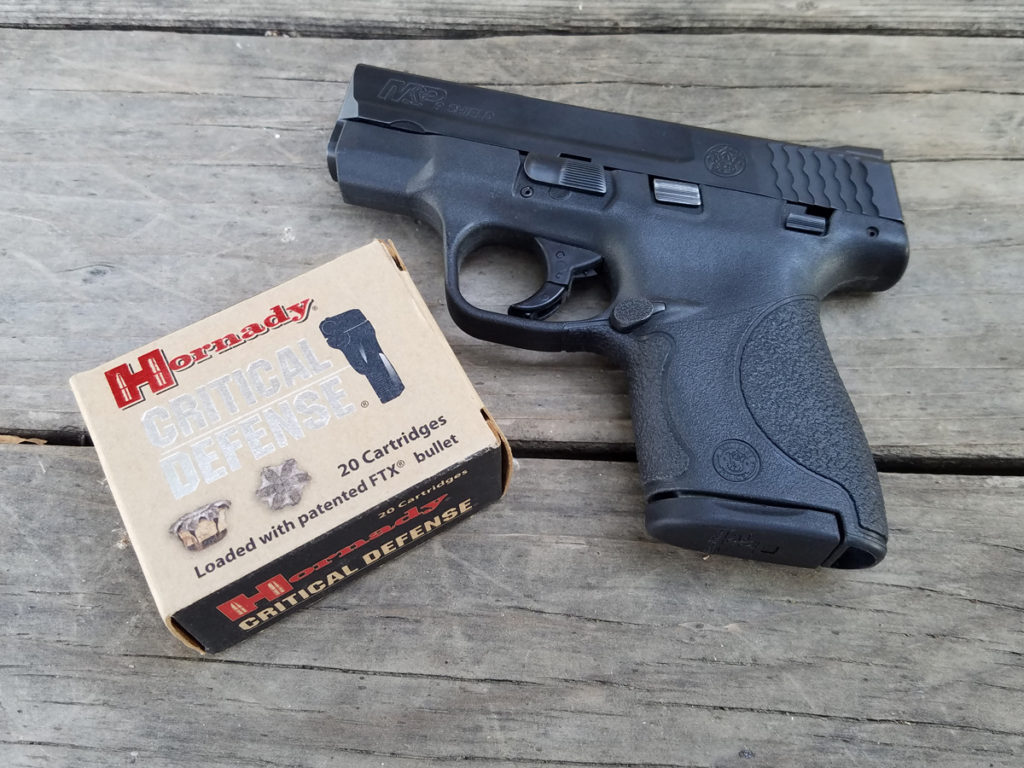
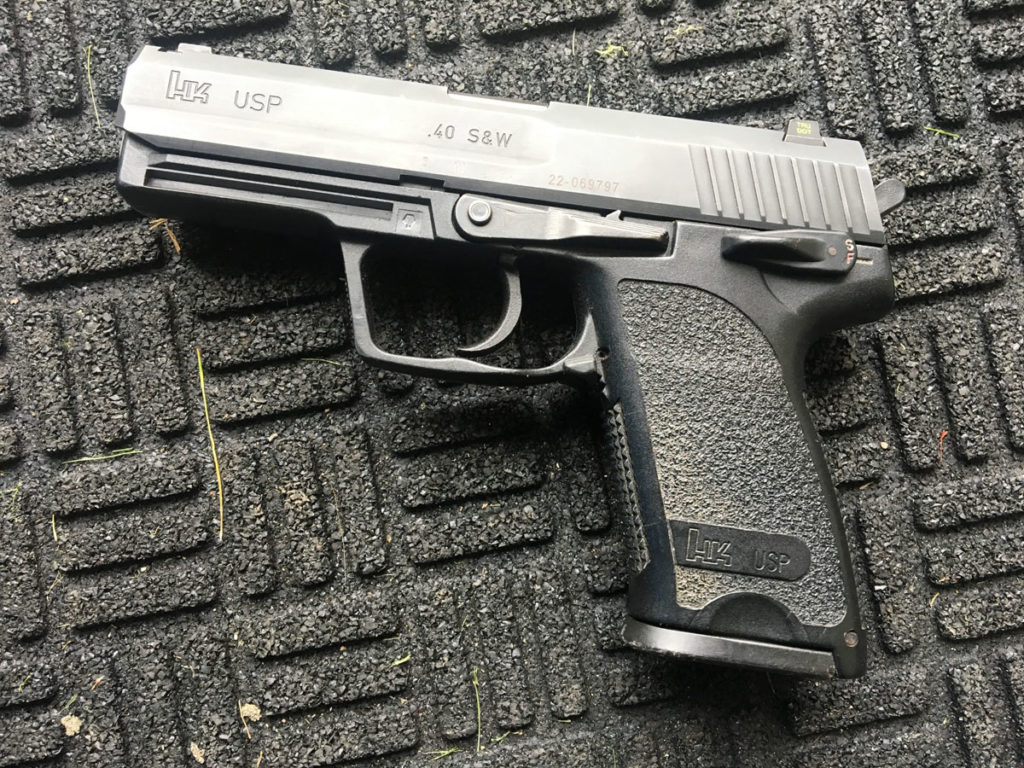
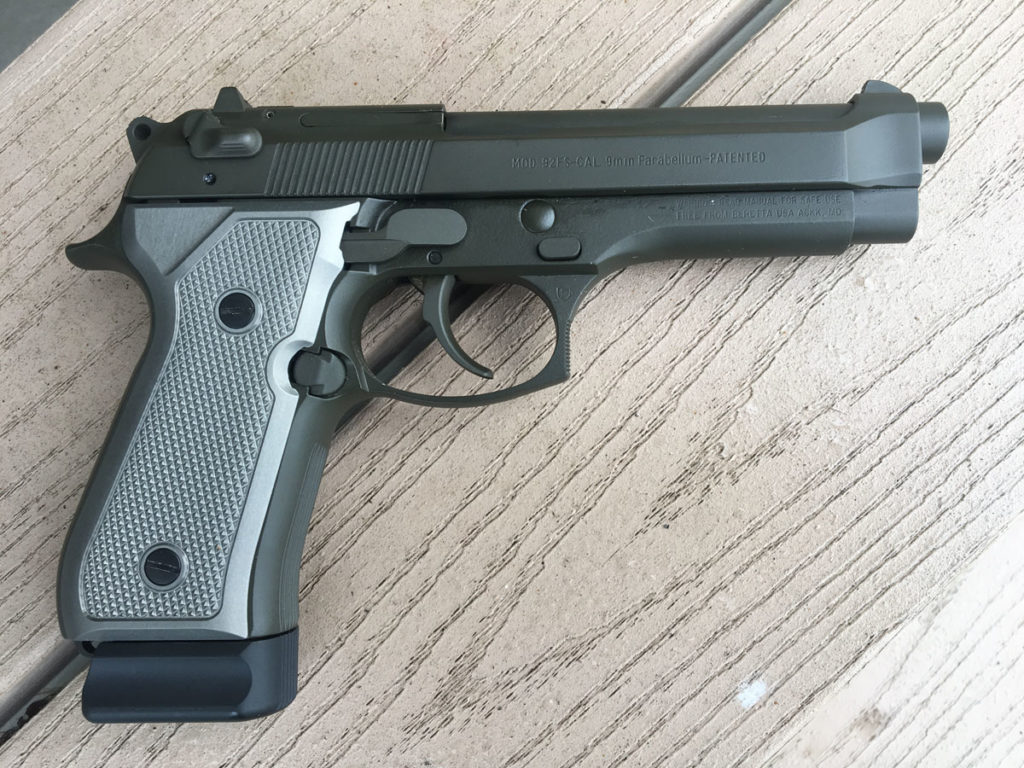
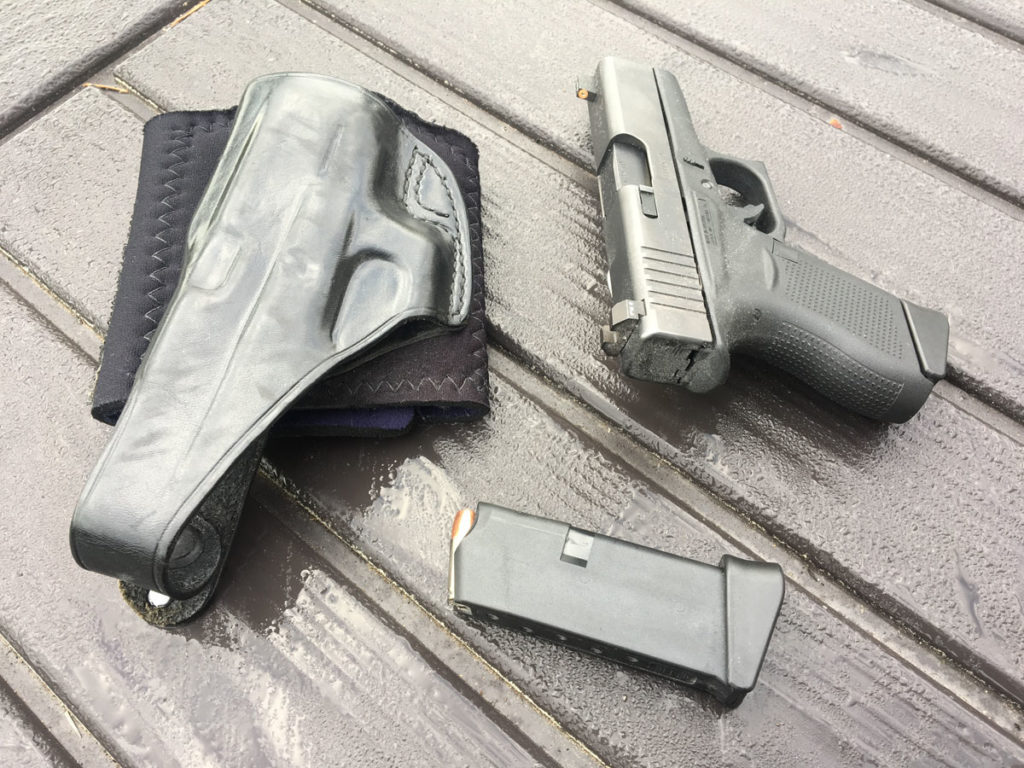
When you say 9mm and above, do you mean equivalent to a “typical” 9mm Luger? What we call a .380 is also a 9mm round (9mm Browning Court). So it follows without higher math that a .38 Special is 9mm too, which in standard form packs a wallop about 1/3 less than a common Luger load. But some of the +P .38 self-defense rounds come much closer. I tend to think any of the above can put a human out of commission at self-defense ranges…depending on the all-important shot placement of course.
Modern 9mm personal defensive rounds are very effective. Other rounds of similar caliber 380, .38 etc are less so. Your results may vary.
Great common sense (which isn’t so common) article.
The part of shooting at close range and missing is right on target. My father was a state police officer and when he went through the training academy they had to do pistol range time of course. He was already pretty good with a pistol and could easily make tight 500 meter center target groups with an M-1 using the iron sites but the 3 foot draw and shoot practice drove him nuts. He told me he drew and fired over 50 times before he got the hang of it. You have to consciously cant the barrel inward to hit something close when aiming is not an option. Plenty of stories out there were trained officers emptied their pistols at a perp at close range and missed every time.
I have seen this more than once with shooters who come from a marksmanship based training program.
Excellent article, thanks. Great guidance for those who want to defend themselves, but don’t know what matters most for a CC gun.
Concealed carry guns need to be small and light enough to carry. They need to be big enough to stop a threat and must fit your hands.Which one is best for you? You will have to find out which one works best for you.
Great article, from what I’ve heard most gun fights have the rule of 3. 3 feet, 3 shots, 3 seconds. One might think 3 ft should be easy enough to hit but in a stress filled moment things can go snafu quickly. I do agree that with all the variety and choices gun manufacturers are coming out with I can see making a decent decision can be somewhat difficult without sending any lead down range. I have personally made the mistake of buying a pistol that I thought “looked attractive” and felt good in my hand. I didn’t realize the long double action pull would make me have to completely re learn how to shoot. I had only really spent quality time shooting 1911’s and when I got a double action sig sauer it was frustrating. 6 yrs and a couple thousand rounds later, I now can hit targets out to 25yds. Practice, practice, and practice more. I heard Jerry michilek once say “people ask how I got to be so fast/accurate?” He then says “go shoot 3 or 4 MILLION rounds and come talk to me” I couldnt afford to sell it and take a loss, so I bought ammo and learned the gun.
A civilian who shoots someone from 20 feet away (average for a cop) is going to have some serious explaining to do unless there’s evidence like a bullet hole showing they were fired at first, or there was a home invader actually inside that person’s house. Just the fact the presumed assailant had a weapon may leave you on very thin ice. Especially if the corpse doesn’t turn out to be a criminal with a history of violence. I read somewhere else that in self-defense shootings by civilians the average distance is more like 5 feet. You still need an adequate gun, of course.
This is true
Each situation is different. The use of force must always be reasonable, You should seek out competent training and know the laws in your area before the fight. I can imagine a number of situations where an armed attacker 20 feet away would merit deadly force. If there is a situation, talk to an attorney before you make a statement.